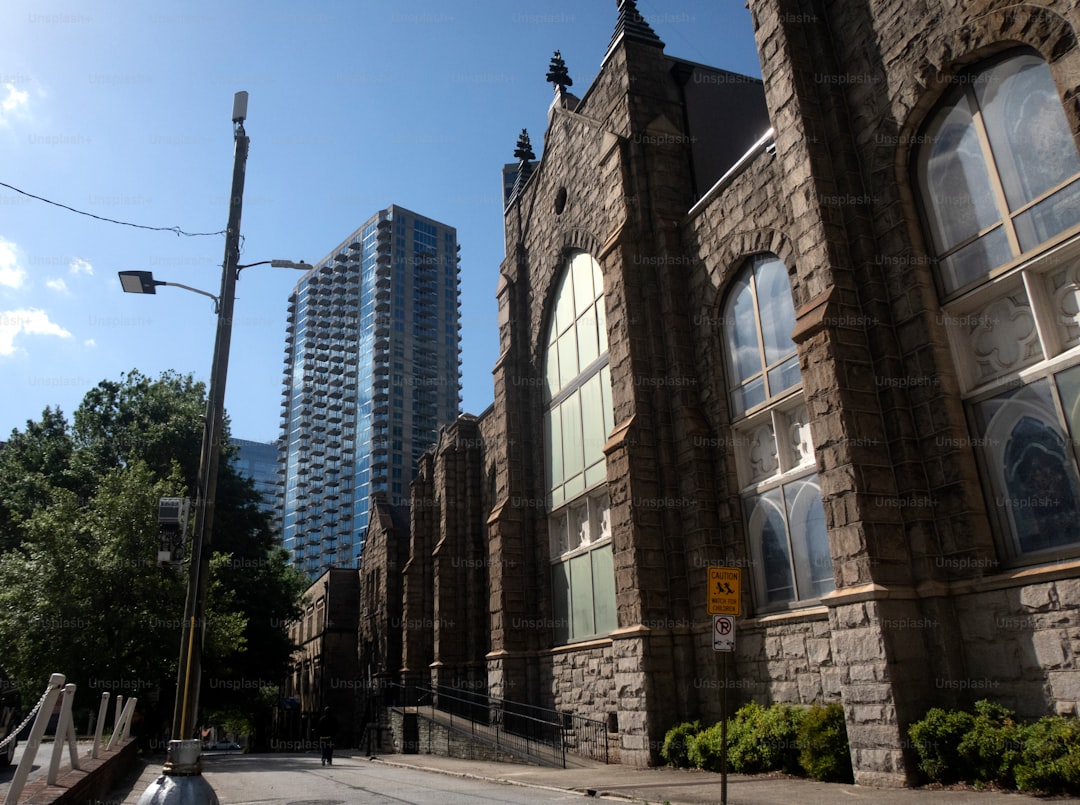Navigating Digital Nomad Permits A Step by Step Travel Handbook

Introduction
The world is more connected than ever, and the freedom to work from any city with a reliable internet connection has turned the traditional office model on its head. Digital nomads—professionals who earn a living online while traveling—are now a recognizable segment of the global workforce. Yet the dream of hopping from Bali to Barcelona can quickly hit a bureaucratic wall if you are not prepared for the visa or permit requirements of each destination.
This handbook is designed to walk you through every stage of obtaining a digital nomad permit, from the first spark of curiosity to setting foot on foreign soil and staying compliant for the duration of your stay. The steps are presented in a logical order, with practical tips, common pitfalls, and real‑world examples to help you move confidently through the process.
Understanding the Landscape
What Is a Digital Nomad Permit?
A digital nomad permit (sometimes called a remote‑work visa, freelancer visa, or “digital nomad visa”) is a special residency authorization that allows non‑citizens to stay in a country for an extended period—typically three to twelve months—while working remotely for an employer or clients located outside the host nation. The permit does not grant you the right to enter the local labor market; it simply acknowledges that your income is generated elsewhere.
Why Countries Offer These Permits
- Economic boost – Travelers spend on accommodation, food, co‑working spaces, and tourism.
- Talent attraction – Some nations hope to create a community of tech‑savvy professionals who can contribute to the local ecosystem.
- Soft power – Hosting creative, globally connected individuals can raise a country’s profile as an innovative hub.
Core Requirements Across Most Programs
While each country has its own nuances, the following elements appear in the majority of digital nomad permits:
- Proof of remote employment or freelance work (contract, letter from employer, or client agreements).
- Minimum monthly income threshold (often ranging from USD 1,500 to USD 5,000).
- Health insurance that covers the host country for the duration of the stay.
- Clean criminal record.
- Valid passport with at least six months remaining.
Understanding these commonalities helps you gauge whether a particular program is realistic for your situation before you invest time in the application.
Step‑by‑Step Process
Below is the roadmap that applies to virtually any digital nomad permit. Each step includes actionable items, suggested tools, and checkpoints to keep you on track.
Step 1 – Define Your Destination
- Identify lifestyle priorities – climate, cost of living, time‑zone compatibility with your clients, language, and community vibe.
- Check visa availability – Not every country offers a digital nomad permit. Use official government portals, reputable travel blogs, and the “Best Destinations for Digital Nomads” guide to shortlist viable options.
- Create a comparison matrix – List each country’s income requirement, maximum stay length, cost of application, and any unique conditions (e.g., tax residency rules).
Tip: Start with countries that have a straightforward online application process; this reduces the chance of unexpected paperwork later.
Step 2 – Verify Eligibility
For each shortlisted country, run a self‑assessment against the basic criteria:
- Employment status – Are you an employee of a foreign company, a freelancer, or a business owner? Some permits exclude self‑employed individuals.
- Income proof – Gather recent bank statements, pay slips, or invoicing records that demonstrate you meet the minimum threshold.
- Health coverage – Obtain a policy that meets the host nation’s specifications; many insurers offer “global nomad” plans that can be purchased instantly.
- Criminal record – If required, request a police clearance certificate from your home country well in advance.
If any red flag appears, consider an alternative destination or a different visa category (e.g., a tourist visa combined with remote work, where legally permissible).
Step 3 – Collect Required Documentation
Create a master folder—digital and physical—where you store every document. Typical items include:
- Passport copy (bio‑data page).
- Recent passport‑size photograph (meeting the country’s specifications).
- Letter of employment or freelance contract – Must state that your work can be performed remotely, the duration of employment, and your salary.
- Proof of income – Last three months of bank statements, tax returns, or audited financial statements for business owners.
- Health insurance certificate – Include policy number, coverage limits, and validity dates.
- Police clearance – If the country demands it.
- Completed application form – Downloaded from the official immigration website.
Label each file clearly (e.g., “Passport – John Doe.pdf”) and keep a checklist to ensure nothing is missed.
Step 4 – Translate and Legalize Documents
Many jurisdictions require documents to be translated into the official language and/or authenticated with an apostille. Follow these guidelines:
- Translation – Use certified translators; some consulates provide a list of approved providers.
- Apostille – If your home country is a signatory to the Hague Convention, you can obtain an apostille from the appropriate authority (often the Ministry of Foreign Affairs).
- Notarization – For documents like employment letters, a notarized copy may be required.
Start this process early; apostille services can take several weeks, especially during peak periods.
Step 5 – Submit the Application
Most countries now offer an online portal for digital nomad permits. The typical workflow is:
- Create an account on the immigration website.
- Upload all documents in the requested formats (PDF is usually safest).
- Pay the application fee – Fees vary from USD 50 to USD 500; keep the receipt.
- Schedule an interview or biometric appointment if required. Some nations process the permit entirely remotely, while others need you to appear at a consulate or embassy.
Pro tip: Keep a screenshot of the submission confirmation and note the reference number. This will be useful if you need to follow up.
Step 6 – Track Processing and Respond to Requests
Processing times range from a few days to several weeks. While waiting:
- Monitor email and portal notifications for any additional document requests.
- Prepare a contingency plan – If your travel dates are flexible, you can adjust them based on the permit’s issuance timeline.
- Stay organized – Keep copies of all correspondence in a dedicated folder labeled “Permit Correspondence.”
If an extra document is requested, respond within the stipulated timeframe to avoid delays.
Step 7 – Receive the Permit
When the permit is approved, you will receive either:
- An electronic visa attached to your passport (e‑visa).
- A physical residence permit that must be collected in person.
Verify that all personal details (name spelling, dates, permit validity) are correct. Any error at this stage can be costly to amend.
Step 8 – Prepare for Arrival
Before boarding your flight:
- Print a copy of the permit and keep it in your carry‑on.
- Arrange accommodation that meets any “proof of address” requirement the host country may have.
- Set up a local bank account (if permissible) to simplify everyday transactions.
- Register with local authorities – Some nations require you to register your address within a certain number of days after arrival.
Step 9 – Settle In and Stay Compliant
During your stay, compliance is key to avoiding fines, deportation, or future travel bans.
- Track days spent – Some permits have a “maximum stay per year” rule. Use a simple spreadsheet or a travel‑tracking app.
- Renew on time – If your permit is renewable, begin the renewal process at least 30 days before expiry.
- Pay local taxes if required – While most digital nomad permits exempt you from local income tax, you may still need to file a tax return if you exceed a certain number of days or earn locally sourced income.
- Maintain health insurance – Keep your policy active and be ready to provide proof upon request.
Step 10 – Exit Strategy
When your permitted stay ends:
- Plan your departure – Book a flight at least a week before the expiration date to allow for any last‑minute administrative steps.
- Close local accounts if you no longer need them.
- Gather documentation (e.g., exit stamps, final tax filings) for future visa applications.
If you wish to return later, check whether the country imposes a “cool‑down period” before you can re‑apply for another digital nomad permit.
Country‑Specific Snapshots
Below are brief profiles of popular digital nomad destinations, highlighting the most distinctive aspects of each program. Use these as a starting point for deeper research.
Portugal – Remote Worker Visa
- Maximum stay: 12 months, renewable for another 12 months.
- Income requirement: Minimum EUR 2,800 per month (average monthly income).
- Unique feature: Ability to apply for a Portuguese residence permit, opening a pathway to permanent residency and EU citizenship after five years.
Estonia – Digital Nomad Visa
- Maximum stay: 12 months, non‑extendable.
- Income requirement: Minimum USD 3,504 per month (average).
- Unique feature: Fully digital application process; all steps can be completed online, including e‑residency verification.
Costa Rica – Rentista Visa (Remote Work)
- Maximum stay: 2 years, renewable.
- Income requirement: USD 2,500 monthly or a bank deposit of USD 60,000.
- Unique feature: Allows you to bring up to two dependents; the country’s “Pura Vida” lifestyle is a major draw.
Thailand – Smart Visa (Digital Nomad)
- Maximum stay: 1 year, extendable up to 4 years total.
- Income requirement: Minimum USD 5,000 per month.
- Unique feature: Offers fast‑track entry at selected airports and access to a dedicated Smart Visa support desk.
Mexico – Temporary Resident Visa (Remote Work)
- Maximum stay: 1 year, renewable for up to 4 years.
- Income requirement: Proof of monthly income of USD 2,200 (or savings of USD 36,000).
- Unique feature: Allows you to travel freely across the entire country and many neighboring nations without additional visas.
Georgia – Remotely from Georgia Program
- Maximum stay: 12 months, no income threshold (but proof of ability to support yourself is expected).
- Unique feature: No visa fee for most nationalities; a vibrant tech community in Tbilisi makes it a magnet for developers.
These snapshots are not exhaustive. Always verify the latest requirements on the official immigration website before proceeding.
Practical Tips and Common Pitfalls
Tips
- Start early – The longest part of the process is often obtaining an apostille or police clearance.
- Keep digital backups – Store PDFs in a cloud folder (e.g., Google Drive, Dropbox) with two‑factor authentication.
- Use a dedicated email for all visa communications; it reduces the chance of missing important updates.
- Maintain a cash reserve – Some countries require you to show proof of funds beyond the income threshold.
- Network with other nomads – Online forums (Reddit, Nomad List) can provide real‑time insights into processing delays or hidden costs.
Common Pitfalls
- Assuming a tourist visa permits remote work – In many jurisdictions, working on a tourist visa is a legal violation and can lead to fines or deportation.
- Neglecting health insurance – Some countries will deny entry at the border if you cannot present a valid policy.
- Overlooking tax residency rules – Spending more than 183 days in a country may trigger local tax obligations, even with a digital nomad permit.
- Submitting incomplete translations – A single missing page can send your application back to square one.
- Failing to register locally – Several nations require you to report your address within a set timeframe; missing this step can result in penalties.
Checklist for a Smooth Application
| Item | Completed? |
|---|---|
| Define target country and verify visa availability | |
| Self‑assessment of eligibility (income, employment, health coverage) | |
| Gather passport, photos, employment contract, income proof, insurance | |
| Obtain police clearance (if needed) | |
| Translate and apostille required documents | |
| Create account on official immigration portal | |
| Upload all documents and pay fee | |
| Schedule biometric/consular appointment (if required) | |
| Track application status and respond to any additional requests | |
| Receive electronic or physical permit | |
| Arrange accommodation and proof of address | |
| Print permit and keep digital copy handy | |
| Register with local authorities after arrival | |
| Monitor stay duration and renew before expiry | |
| Plan exit strategy and keep exit documentation |
Tick each box as you complete the step to avoid overlooking critical tasks.
Resources and Tools
- Official immigration portals – Always the primary source for forms, fees, and updates.
- Apostille services – Many countries have online portals; private providers (e.g., Apostille Service, NotaryCam) can expedite the process.
- Health insurance comparators – SafetyWing, World Nomads, and Cigna Global specialize in coverage for remote workers.
- Financial trackers – Mint, YNAB, or a simple spreadsheet to prove consistent income.
- Community platforms – Nomad List, Remote Year forums, and Facebook groups for each destination.
- Tax advisors – Specialists in expatriate tax can clarify obligations; look for firms with a digital nomad focus.
Final Thoughts
Securing a digital nomad permit is a blend of careful planning, diligent paperwork, and strategic timing. The process may feel bureaucratic, but each requirement exists to protect both the host country and the traveler. By following the step‑by‑step roadmap outlined in this handbook, you can transform a complex set of regulations into a manageable checklist, freeing you to focus on the true essence of the nomadic lifestyle: exploring new cultures, building global connections, and delivering your work from wherever inspiration strikes.
Remember that the world’s visa landscape evolves rapidly. What is true today may change tomorrow, so make a habit of revisiting official sources before each new application. With preparation, persistence, and an eye for detail, you’ll be well on your way to turning the globe into your office. Safe travels!
Random Posts

Building a Portable Money Management System for Travelers
Learn how to craft a portable money management system that lets digital nomads earn, spend, save and report anywhere, balancing access, security, compliance and low costs.
2 months ago

Best Places to Work Anywhere and the Gear That Powers You
Discover top remote work hotspots from Bali cafés to Colorado cabins and the essential gear that keeps you fast, comfy and connected wherever you set up shop.
2 weeks ago

Freelance Success Blueprint with Skill Growth and Online Learning
Discover the Freelance Success Blueprint, a clear roadmap that blends strategic planning, productivity habits, and continuous online skill growth so you can attract high paying clients and build a sustainable, adaptable freelance career.
1 week ago

Nomad Friendly Cities Ranked with Insider Transportation Tips
Discover the top nomad-friendly cities, ranked by internet, cost, safety and more, plus local transportation hacks, from hidden bike lanes to cheap ride-hail codes, that turn any destination into a productive remote-work base.
2 days ago

Top Digital Nomad Hotspots and Must-Have Tech Gear
Discover the best digital nomad cities and the essential tech gear you need to stay productive, connected and secure wherever you travel.
1 month ago
Latest Posts

Essential Software Every Remote Professional Should Use
Master remote work with essential tools: instant messaging like Slack, high definition video calls such as Zoom, and asynchronous voice apps. Streamline communication, stay connected and boost productivity.
1 day ago

Mastering Remote Work Productivity for Digital Nomads and Freelancers
Learn proven habits, tools, and tactics that help digital nomads and freelancers stay focused, deliver quality work, and maintain a sustainable lifestyle while traveling the world.
1 day ago

Tech‑Friendly European Towns Perfect for Remote Living
Discover Europe’s best small towns where fast internet, affordable living and vibrant tech communities let you work remotely while soaking up historic charm, lakeside views or mountain air.
1 day ago